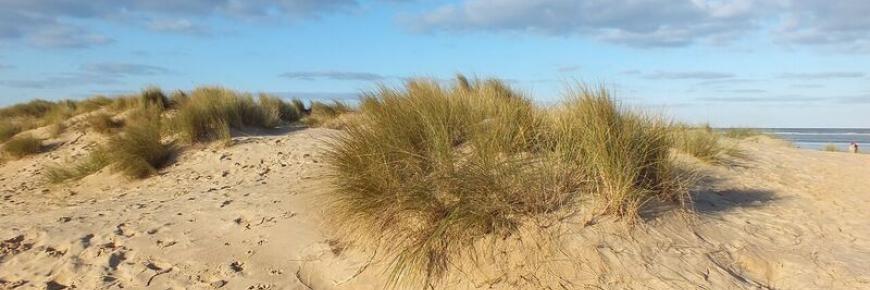What are coastal sand dunes?
Sand Dunes: sand hills in the coastal landscape. Many of us are familiar with them, though perhaps only visit them occasionally. Dunes are often a space for leisure, associated with beach trips. Dunes are present in many countries and are a prominent feature of the European coastline.
As much as 420 km of the coastal landscape in the 2 Seas area consists of dunes, making it the most dune-protected coastline in Europe.
How many times have you walked through a landscape of sand hills before getting to the beach? This is the first important function of dunes – they provide a recreational coastal space, where you can take walks, or which you simply pass on your way to sea. This is how you may know dunes best, but they are much more than just a leisurely space for people to enjoy.
Many specialised plants and animals live in this sandy coastal zone, together forming the dune ecosystem. This is the second function of dunes: they constitute a specific coastal ecosystem and are therefore also a natural space. Accordingly, while enjoying dunes, it is important to know how to do so without disturbing coastal nature.
Perhaps you have also heard that dunes can be important in protecting the land behind it against flooding. As a first natural barrier, the adaptable sand hills, which constantly shift due to tides and wind, can reduce the risk of flooding and coastal erosion. This ability to mitigate risk of flooding is the third important function of sand dunes. Maintaining dunes is thus not only significant for nature and our own leisure, but also for the protection of the land we live on.
The ENDURE project has brought these three elements of dunes together in an ambitious international project. While ENDURE has focussed on the role of natural dune development in policies against flooding and coastal erosion, it has done so with the conviction that the various different aspects of dunes can only reach their full potential when all are being taken into account.

